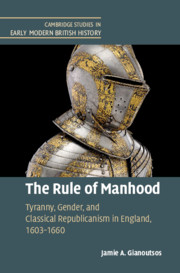Introduction
Published online by Cambridge University Press: 26 January 2021
Summary
Desiring to deepen his understanding of the present world by turning to the past, between 1644 and 1652 the Cambridge student William Bright filled a small book with notes and commonplaces gleaned from political, historical, and religious writings. In 1648 he recorded political and military observations drawn from an anonymous pamphlet by ‘D. P. Gent’, listing five ‘chiefe Causes of the mutations of Monarchies’: ‘Wants of Issue’, ‘Ambition’, ‘Lust’, ‘Effeminacy’, and ‘Taxes’. The original pamphlet, entitled Severall politique and militarie observations (1648), had listed six causes of the mutations of monarchy, with the first being the ‘crying sinnes of a Nation’.1 Bright, however, only copied into his notebook those causes which could be illustrated by historical and contemporary rather than by divine example. Beside each of the causes, he included a short list of such exempla, including Julius Caesar and Richard III for ‘Ambition’; Sextus Tarquin and Appius Claudius for ‘Lust’; and Sardanapalus of Assyria for ‘Effeminacy’.
- Type
- Chapter
- Information
- The Rule of ManhoodTyranny, Gender, and Classical Republicanism in England, 1603–1660, pp. 1 - 18Publisher: Cambridge University PressPrint publication year: 2020



